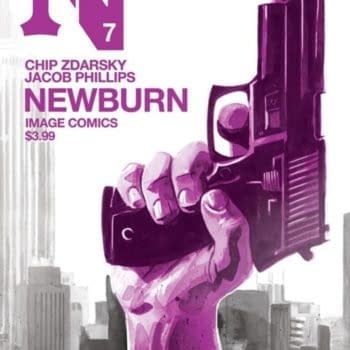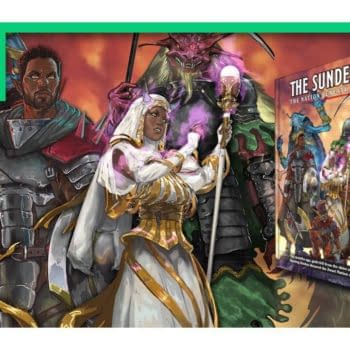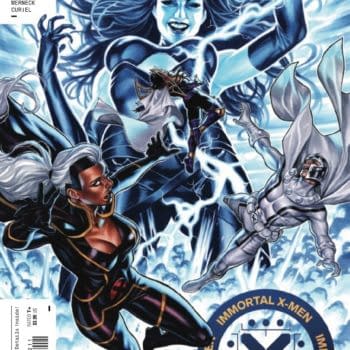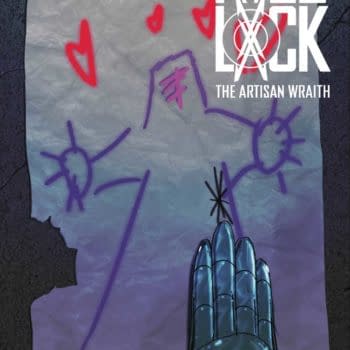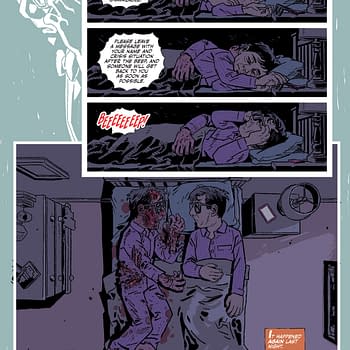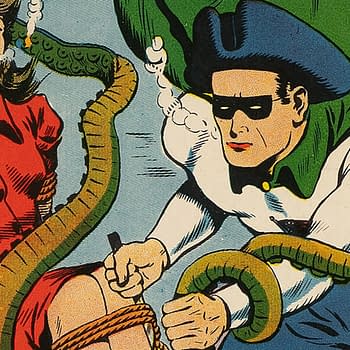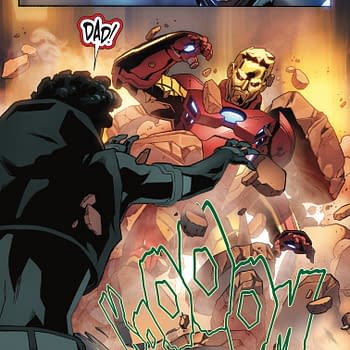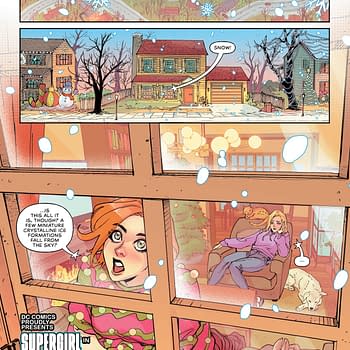A mysterious gangland murder brings out the worst in many people in power, and Newburn #7 is here to throw the plot twists at you fast and furious. When a
Posted in: Comics | Tagged:
The Seven Principles of Kwanzaa Embodied in Comics
Across the world, millions of people celebrate the African-themed holiday of Kwanzaa. Created in 1966 by Dr. Maulana Karenga, the holiday has an almost hip hop feel to it as it "sampled" some of the best elements of continental African beliefs and perspectives into something that could be celebrated across the various elements of the diaspora.
In honor of the holiday, Bleeding Cool presents for the first time a round-up of names that symbolize the different values of the Nguzo Saba, the seven guiding principles of the holiday, one for each day.
UMOJA (unity)
The first choice for this was TV writer, comic book writer, producer and all-around creative Geoff Thorne, who has done a lot to mentor young Black creative talents (as well as ones who were not Black) culminating in his rule-breaking animated series Avengers: Black Panther's Quest.
As much as Thorne has done, for the inaugural edition of this, the clearer choice is Arvell Jones. Aside from the fact that he co-created Misty Knight (alongside comics mainstay Tony Isabella), when Black men were hard to find in comics in the 1970s, he was at Marvel drawing alongside the biggest names. Since then, he has never stopped drawing, working on independent works and also devoting himself to activism efforts to elevate his community of Detroit. At conventions, he'll spend long periods with young artists discussing draftsmanship, consistency and other tools of the trade. Arvell is one of the Black comics community's longest-standing icons of unity.
KUJICHAGULIA (self-determination)
Given his groundbreaking upcoming HBO fantasy series, British-born Sebastian A. Jones was an early consideration for this as his self-determined fantasy world of Asunda comes to life as it had in print with books like Niobe and Erathune.
However, again, as an inaugural instance, the very first African-American woman cartoonist Jackie Ormes has a little better claim. She was a professional cartoonist before the official start of World War 2, and she managed to include subtle radicalism into her work in a time when Black people were encouraged to keep their heads down and mouths shut. Jackie Ormes created characters that could step into a world that was forbidden to their creator, and that accomplishment is central to deciding for one's self how their life will be.
UJIMA (collective work and responsibility)
Easy call here. There are five names that were at the center of the legendary publishing imprint Milestone Comics: Christopher J, Priest (more about him in a moment, but he designed the logo), Denys Cowan, Michael Davis, Derek Dingle and of course, "the maestro," Dwayne McDuffie. After seeing the success of the Image Revolution, McDuffie helped lead the effort to create a line of comics that spoke to an often ignored demographic, creating properties like Static Shock, which later made heroes like Miles Morales commercially viable.
He was a symphony of styles, with a bachelor's degree in English and a master's degree in Physics, even studying film at the Tisch School of the Arts. Despite some well-documented challenges with editorial at both of the biggest publishers he created Damage Control for Marvel and shone brightly with his own creations and in animation, creating Justice League Unlimited works that stand the test of time and are still lauded today. His widow, animation producer Charlotte Fullerton McDuffie, carries on his legacy with the McDuffie Award in conjunction with Long Beach Comic-Con.
UJAAMA (cooperative economics)
Let's talk about game-changer C. Spike Trotman. By embodying some other principles (self-determination, creativity) she created her own lane to be named a "thought leader" by Kickstarter. She has raised over a million dollars through fourteen crowdfunding campaigns, using her self-started Iron Circus Comics imprint (Smut Peddler; Templar, Arizona) to bring fantasy, sci-fi, porn, erotica, horror, and queer-friendly books to market. She has remained a resource to the creator community, won a Glyph Award for her work in 2007 and did so without compromising what she wanted to do.
NIA (purpose)
It would be hard for anyone to question the science fiction bona fides of author N.K. Jemisin, yet it has happened. She's the only author to ever win the Hugo Award for Best Novel in three consecutive years, won the Locus Award and has multiple Nebula Award nominations. A psychologist and career counselor by trade, she has written for the New York Times, her book The Fith Season is slated to be a series at TBS and currently helms a critically acclaimed Green Lantern-themed series called Far Sector for DC Comics' Young Animal imprint (seriously, it's breathtaking. In appearances and her online appearances, she has remained gracious and focused on delivering stories of the impossible from a perspective not appreciated by the Sad Puppies crowd.
KUUMBA (creativity)
With so many people being qualified for this category, an easy choice would have been actor/writer Kevin Grevioux, whose creation the Blue Marvel is seeing a resurgence in Incoming. He's launched two action-horror franchises Underworld and I, Frankenstein) and has a host of other ideas bubbling. However, this year belonged to David Walker, who saw his Sanford Greene collaboration Bitter Root book get a film deal with Legendary Pictures while he collaborated with his pal Brian Michael Bendis on Naomi for DC Comics and launched his own shingle called Solid Comix, began a webcomic called Discombobulated among a flurry of other creative accomplishments. He managed all this while struggling with health issues transparently, sharing his journey and struggle and empowering others who may have the same issues. Let's all hope to see much more from the seemingly endless font of creativity from Walker in years to come.
IMANI (faith)
If goodness in life goes to those who believe, the legendary Christopher Priest will reap rewards unimaginable. His resume reads like an encyclopedia: he was the first Black editor on at either of the biggest two publishers in the industry (at different times of course). His epic run on Black Panther created the Dora Milaje and many of the innovations that Ryan Coogler brought brilliantly to life. He left Milestone before it officially began, but designed the logo before he went. He was mentored by Larry Hama, worked directly for Jim Shooter and Paul Levitz, brought Quantum and Woody back to life multiple times, and has written and edited (at the very least), Spider-Man, Superman, Vampirella, Batman, Xero, Captain America, Green Lantern, Steel, Deadpool, Power Man and Iron Fist, and so many more. He recently finished a fifty issue run on Deathstroke. He hired Joe Quesada and Peter A. David for their first works in comics when no one else would.
While all this was happening, white creators in the Marvel bullpen would rub his head for luck, diminish his efforts (despite his role in increasing payments available to creators in conjunction with Shooter), he changed his name, experienced divorce and loss and moved from New York to an idyllic town in Colorado where he serves as a pastor and produced music.
Through it all, his belief in comics and the medium kept bringing him back, and each time he gifted the world with some new gem of brilliance. He's been a north star for Black comics fans to rely on for more than four decades all buoyed by an unshakeable belief that drives his efforts.
HAPPY KWANZAA!
If all goes well, next year we'll honor a new set of Black creators who embody these principles.
Additional reporting by Greg Anderson Elysee.
Stay up-to-date and support the site by following Bleeding Cool on Google News today!






